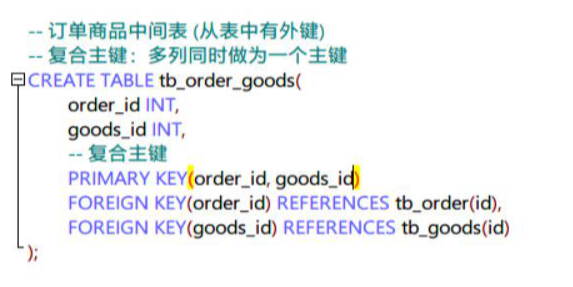1,多对多:

# 商品表create table tb_goods( id int primary key auto_increment, payment DECIMAL(10, 2), payment_type varchar(30), status int);# 订单表create table tb_order( id int primary key auto_increment, title varchar(32), price DECIMAL(8, 2));# 中间表create table tb_other_goods ( orther_id int, goods_id int, primary key (orther_id,goods_id),# 两个外键对应两个主键,实现多个一对多的关系,就是多对多; foreign key (orther_id) references tb_goods(id), foreign key (goods_id) references tb_order(id));
2,一对多:
# 用户表create table tb_user( id int primary key auto_increment, photo varchar(200), nickname varchar(32), age int, gender char(1));drop table tb_user_desc;# 用户详情表create table tb_user_desc( id int primary key auto_increment, city varchar(20), edu varchar(10), income DECIMAL(8, 2), status varchar(10), # 关键字作为字段名要加 飘号:` ` `desc` varchar(1000),# 主键作为外键对应主表的主键,就形成一对一的关系; foreign key (id) references tb_user (id));#
3,一对一:
4,自己对自己:(属于一对一)


